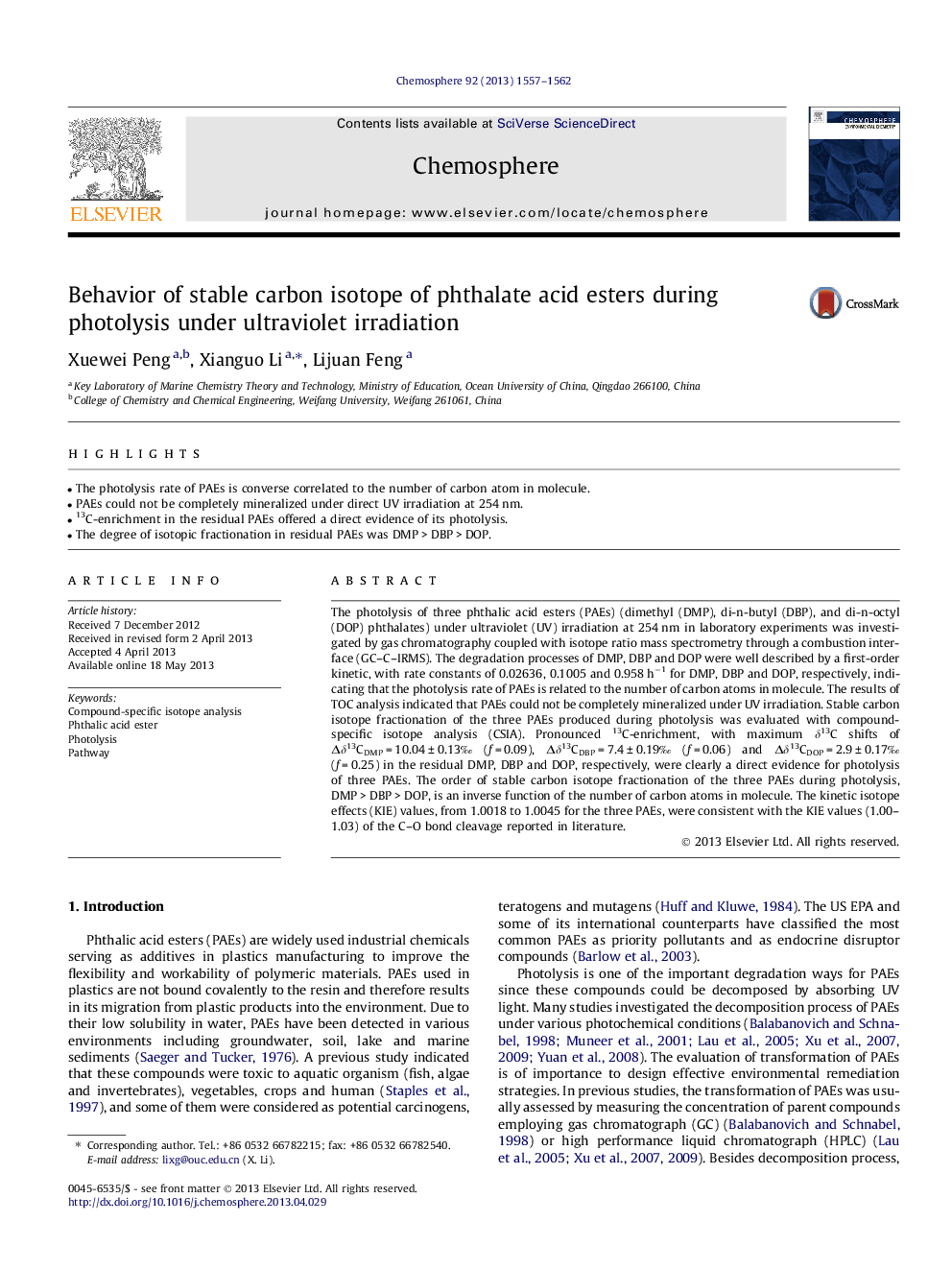| Article ID | Journal | Published Year | Pages | File Type |
|---|---|---|---|---|
| 6310510 | Chemosphere | 2013 | 6 Pages |
Abstract
The photolysis of three phthalic acid esters (PAEs) (dimethyl (DMP), di-n-butyl (DBP), and di-n-octyl (DOP) phthalates) under ultraviolet (UV) irradiation at 254 nm in laboratory experiments was investigated by gas chromatography coupled with isotope ratio mass spectrometry through a combustion interface (GC-C-IRMS). The degradation processes of DMP, DBP and DOP were well described by a first-order kinetic, with rate constants of 0.02636, 0.1005 and 0.958 hâ1 for DMP, DBP and DOP, respectively, indicating that the photolysis rate of PAEs is related to the number of carbon atoms in molecule. The results of TOC analysis indicated that PAEs could not be completely mineralized under UV irradiation. Stable carbon isotope fractionation of the three PAEs produced during photolysis was evaluated with compound-specific isotope analysis (CSIA). Pronounced 13C-enrichment, with maximum δ13C shifts of Îδ13CDMP = 10.04 ± 0.13â° (f = 0.09), Îδ13CDBP = 7.4 ± 0.19â° (f = 0.06) and Îδ13CDOP = 2.9 ± 0.17â° (f = 0.25) in the residual DMP, DBP and DOP, respectively, were clearly a direct evidence for photolysis of three PAEs. The order of stable carbon isotope fractionation of the three PAEs during photolysis, DMP > DBP > DOP, is an inverse function of the number of carbon atoms in molecule. The kinetic isotope effects (KIE) values, from 1.0018 to 1.0045 for the three PAEs, were consistent with the KIE values (1.00-1.03) of the C-O bond cleavage reported in literature.
Related Topics
Life Sciences
Environmental Science
Environmental Chemistry
Authors
Xuewei Peng, Xianguo Li, Lijuan Feng,
